Related Tags
Amp FAQ: Refurbishing a Fender black-panel Bassman (Part One)
Rift Amps head honcho Chris Fantana gives a neglected classic some much-needed love.

This Bassman isn’t sounding great so it’s time to investigate!
First introduced in late-1964 as the replacement for the short-lived blonde Bassman amplifiers – circuits 6G6, 6G6-A, and 6G6-B – the black-panel version featured a new circuit designed to offer a wider range of clean tones, with the now characteristic ‘scooped’ sound that we associate with Fenders of the era.
The output valves were switched from 5881s to the new variant of the 6L6, the 6L6GC. The transformer complement remained the same with the output transformer retaining its 4.2k primary impedance. The phase inverter circuit was reconfigured around a 12AT7 instead of the 12AX7, which, despite having a lower amplification factor, allowed a greater voltage swing on each half of the output, further increasing output across the board rather than peak power.
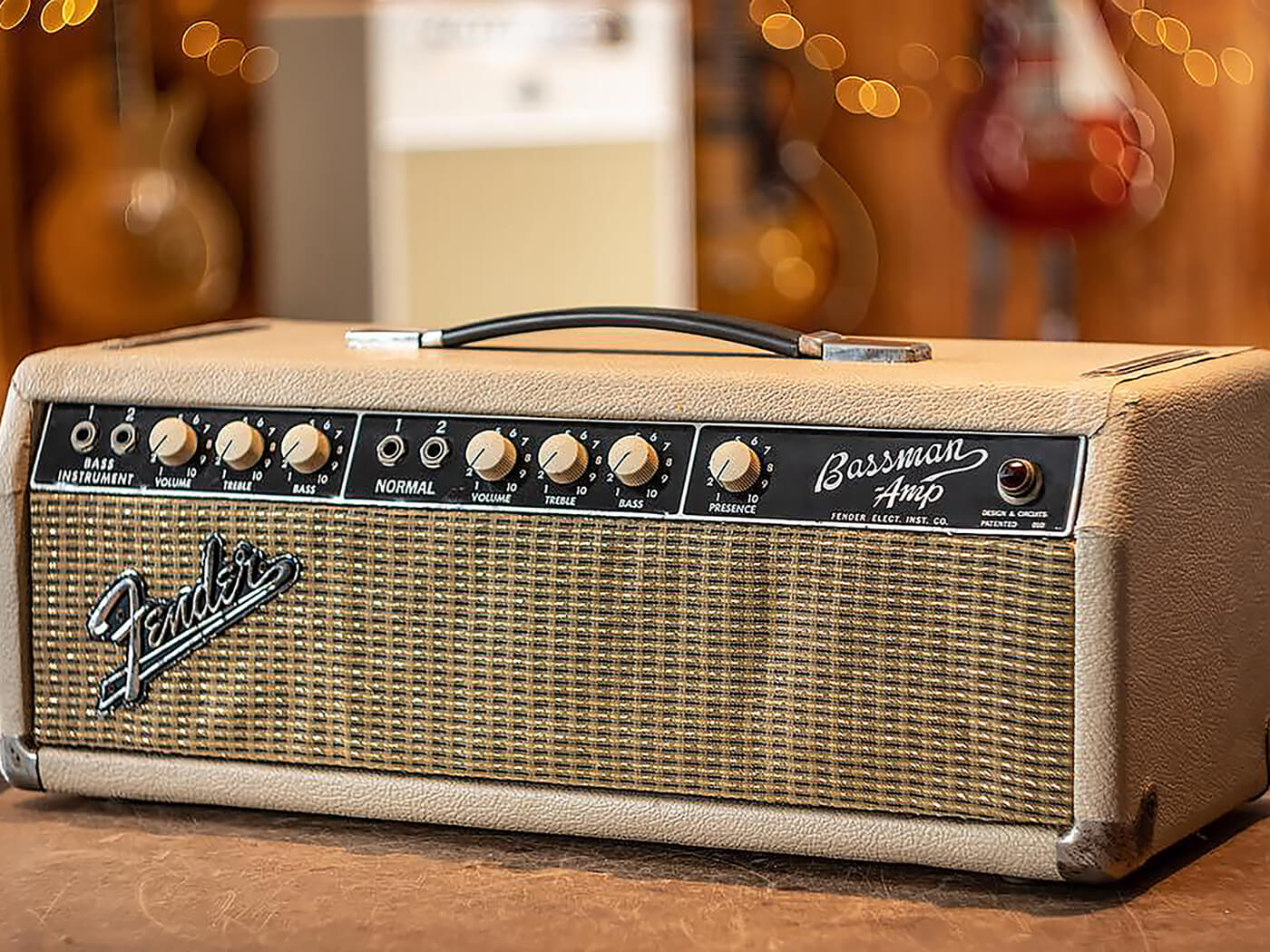
Other circuit alterations included changes to the tonestacks found in both the bass and normal channels. The normal channel lost its 70 per cent tapped 350k log potentiometer found in the treble position and saw it replaced with a 250k log version that is still commonly used to this day.
Changes to the bass channel include amended capacitor values in the tonestack, the addition of a deep switch, and revisions to the gain stage operating points. Globally, the presence control was removed and negative feedback was increased.
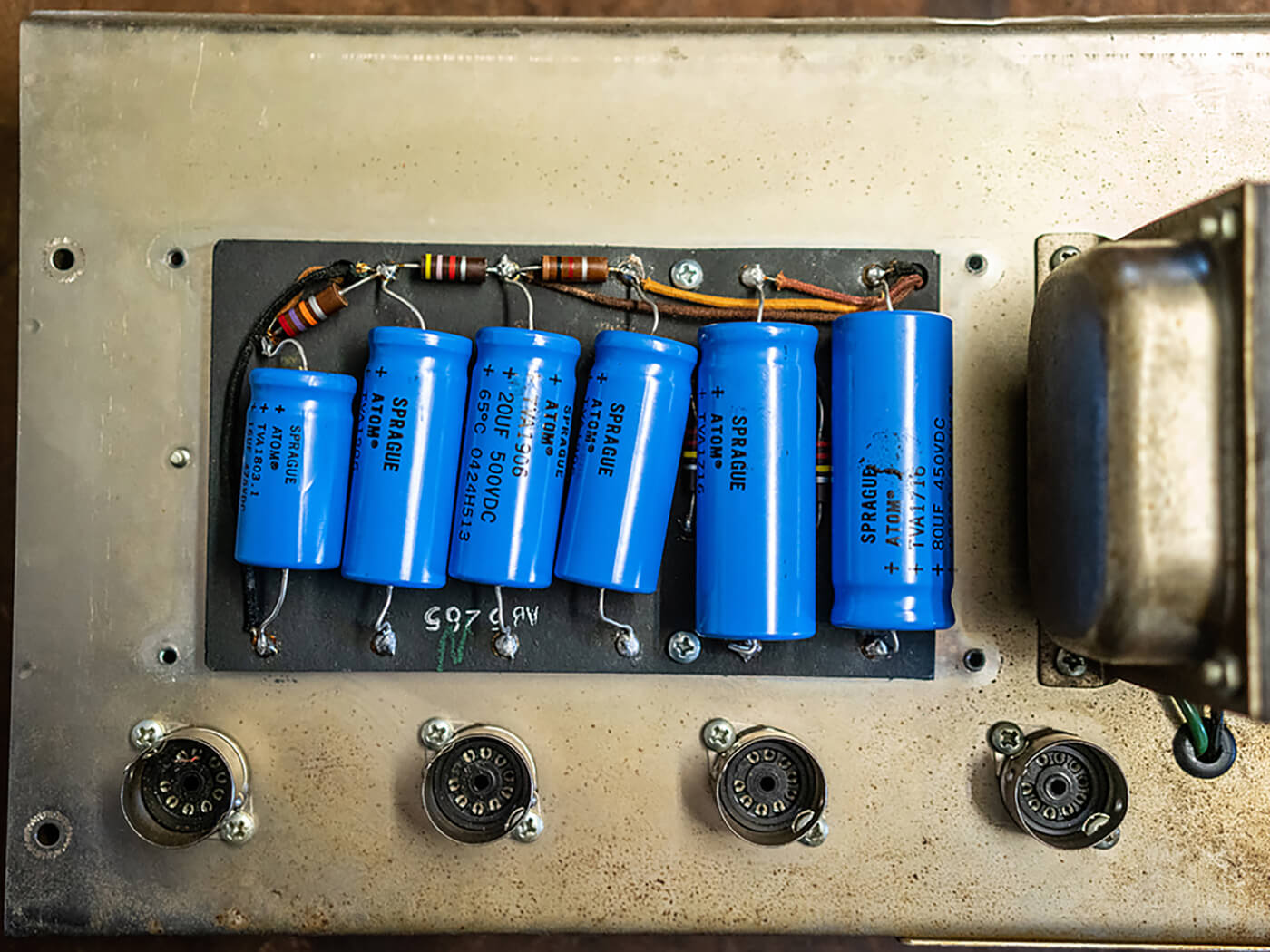
Under the hood
The example on my bench is not a museum piece, but a well-used amp that previous owners have definitely got their money’s worth from. Unfortunately, today it’s got a few issues that’ll need sorting before it’ll sing as it should. The customer has complained that it’s incredibly gainy and suffers from excessive sag. Time to open it up, then.
I generally don’t like to plug faulty amplifiers straight into the mains before giving them a full visual inspection. Experience tells me that you’re better to be safe than sorry, especially with vintage amps. I was told that this was a 1965 model, circuit AA165, and the tube chart inside the cabinet confirms that with the code OI (O = 1965, I = Sept). However, I’ve seen many a vintage Fender where the tube chart doesn’t match the chassis, so let’s keep digging.

The outside of the chassis is stamped with the serial number A16440, which Fenders own records tell us was allocated as a 1966 build. Inside the chassis, an ink stamp 0166 indicates that the chassis was wired in the first week of 1966. The transformers all date to late 1965, and so do the potentiometers. The chassis could not have been built with components made after the fact so this chassis was, at the very oldest, born in January 1966.
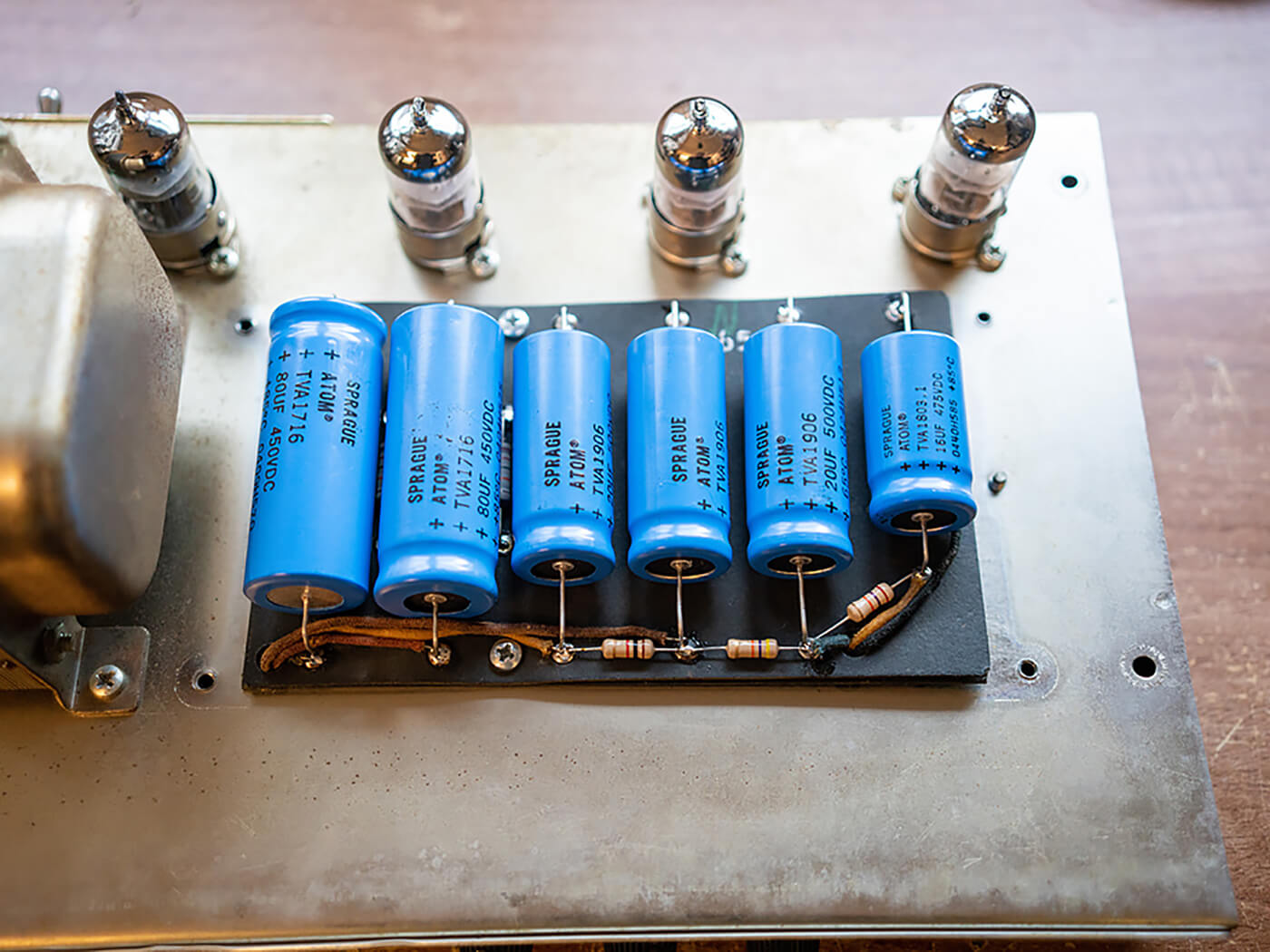
There’s a final nail in the coffin for the Sept ’65 theory, which is that this circuit is in fact designation AB165, owing to certain component values, configurations, and hardware not found in the earlier AA864 and AA165 circuits. To complicate things further, in the past this amplifier has been converted to the earlier AA864 specification, but not entirely. This mainly relates to the bias circuit, changing to a standard grid-bias network rather than the bias-balance circuit found in the AB165 and later Silverface circuits.

Fixer upper
Our visual inspection reveals a host of poorly executed repair work, shoddy soldering, and general laziness when it comes to the repair and maintenance of a vintage amplifier. I notice that both the high-voltage filter stack and the mains supply require my immediate attention before I even plug this in. Time to get the soldering iron out.
Starting with the filter capacitors underneath the dog house, we can see that the originals were replaced some time ago with good-quality modern replacements. If you read the last instalment of this column, you’ll know that electrolytic filter capacitors have a limited lifespan, so it’s not uncommon to see replacements in an amplifier of this age. Unfortunately, the quality of work is not up to scratch, with poorly positioned capacitors, twisted leads, and cold solder joints throughout. One solder joint is not even connecting the components (see picture four).
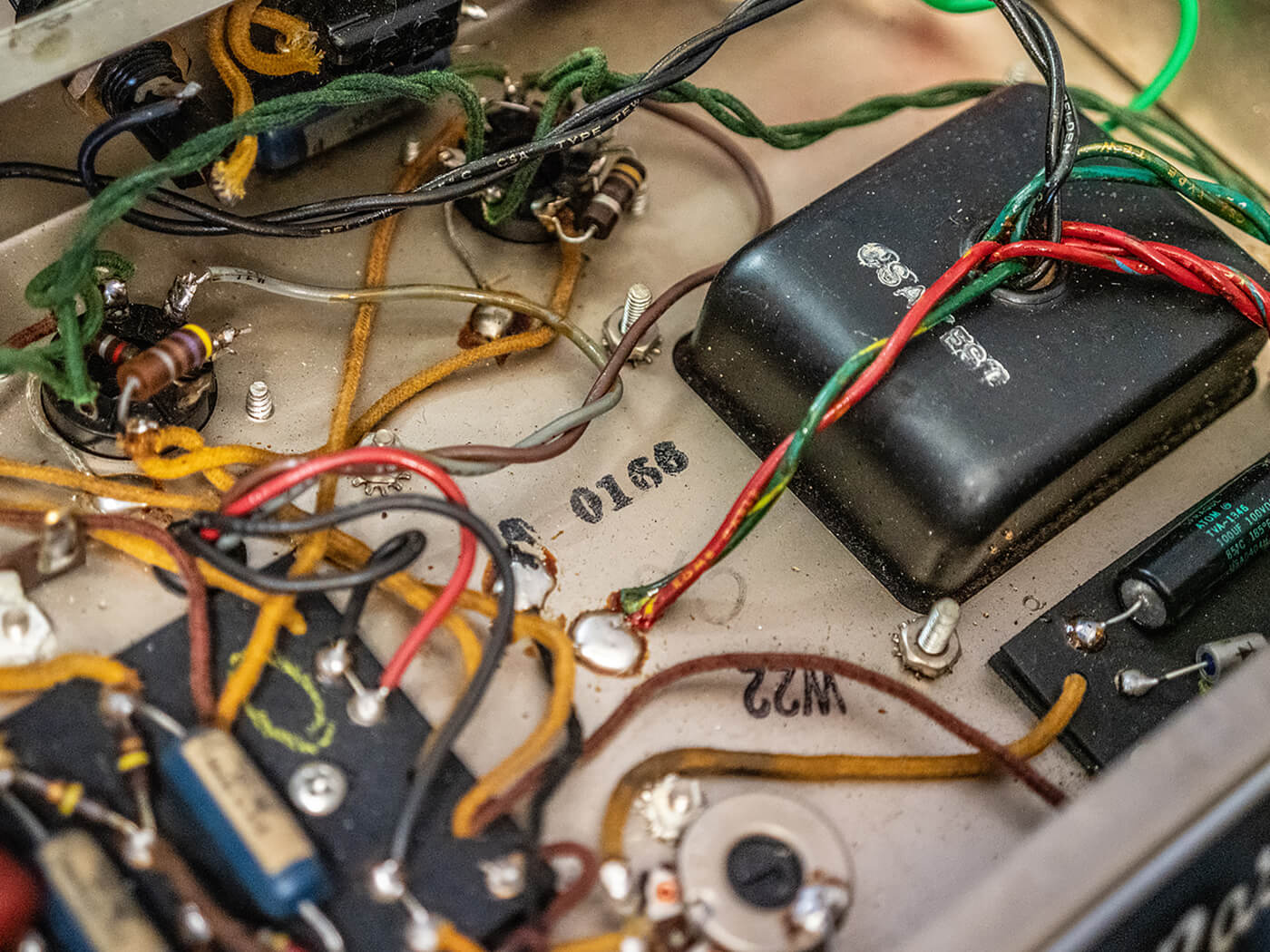
We might as well do the job properly, so every component is unsoldered and removed from the board, tested and replaced if required. At the same time, it’s a good opportunity to remove the board itself from the chassis, clean, rewire, and tidy up any issues.
The six Sprague capacitors thankfully all test ‘as new’ on my high-voltage tester, so can be reinstalled. There are five resistors on this board and they all have a tough job in the circuit, going through electrical abuse every time the amplifier is switched on and off. Each and every one has drifted out of tolerance, so new replacements are soldered in. The completed board is shown in picture five – much better, I think you’ll agree.
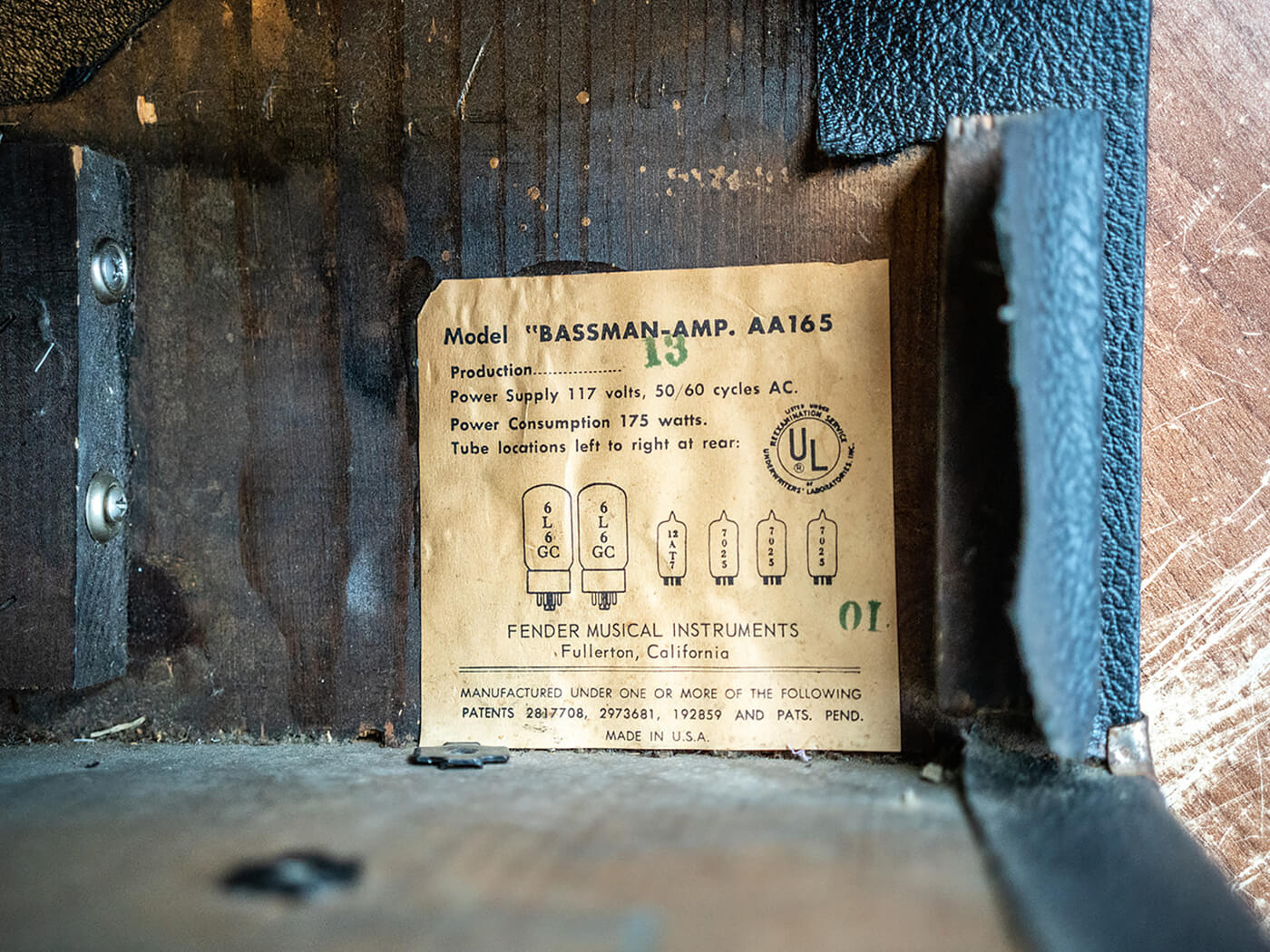
Our next job is to rewire the mains cable to a safer specification, with the live wire connecting to the on/off switch, via the mains fuse. Ideally, the neutral wire would be switched as well, but in this case, it is connected straight to the common side of the main’s transformers primary winding.
The black-panel Bassman should have three 7025 (high-grade 12AX7) and one 12AT7 preamp valve, and this amplifier arrived on my bench with four 12AT7s instead. After swapping in the correct valves I can now fire it up. Come back next month to find out how it sounds.
Visit riftamps.com to check out Rift’s range of handwired amplifiers.
